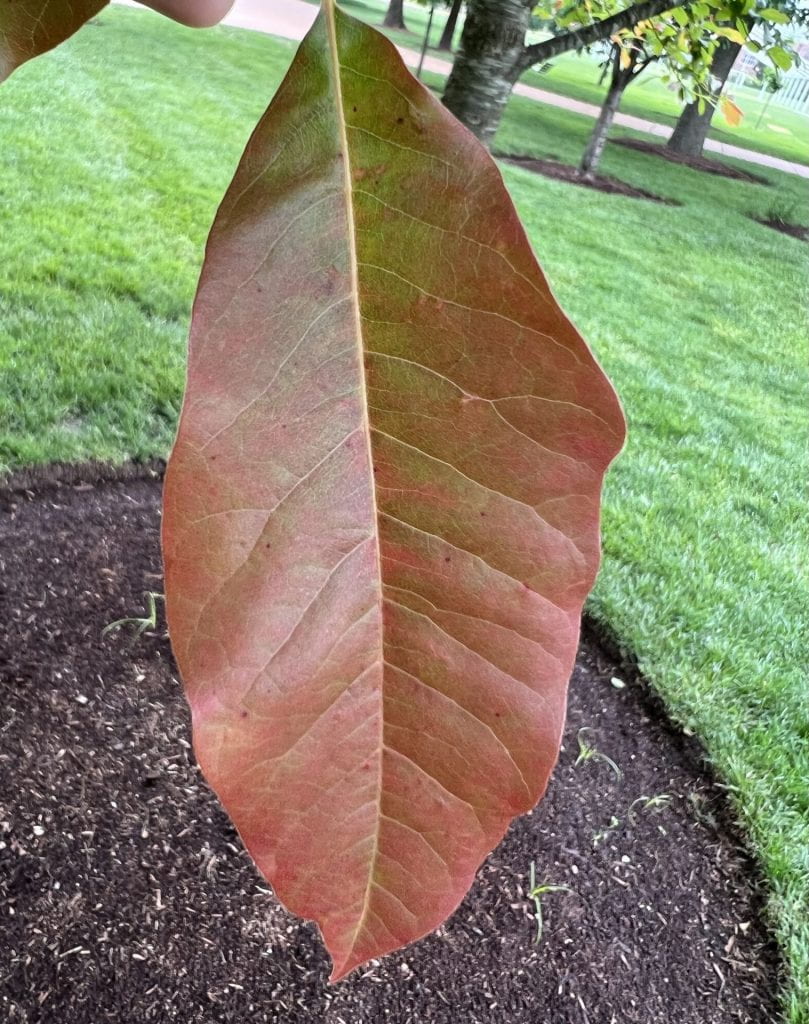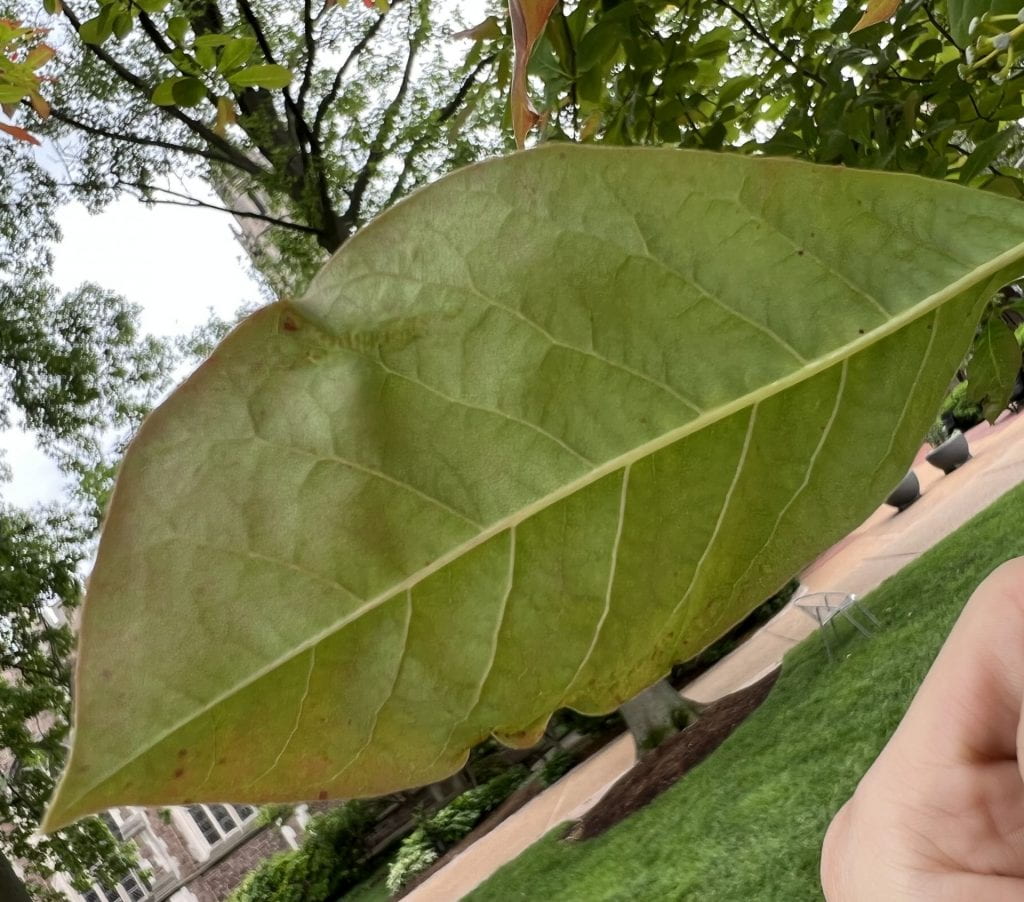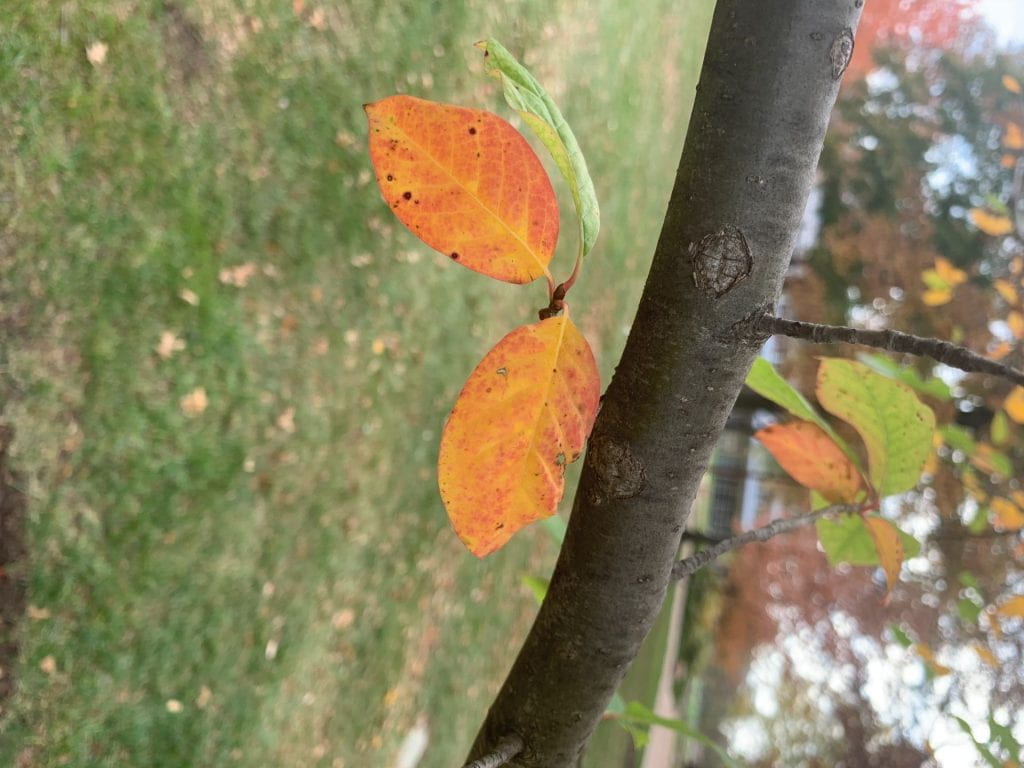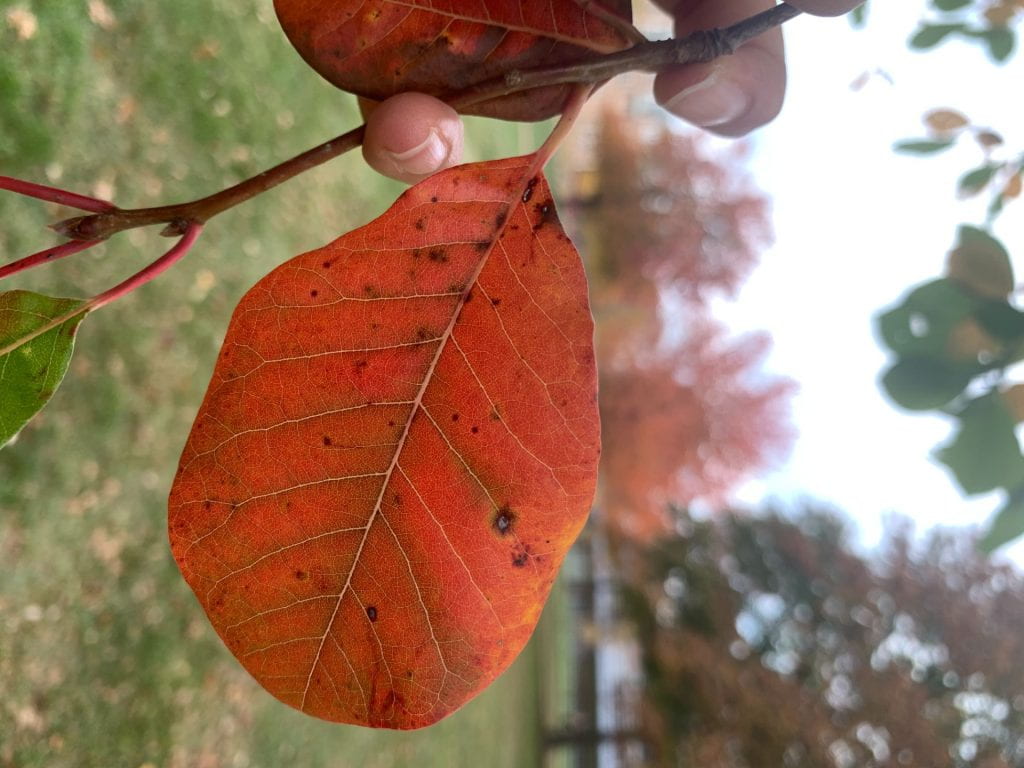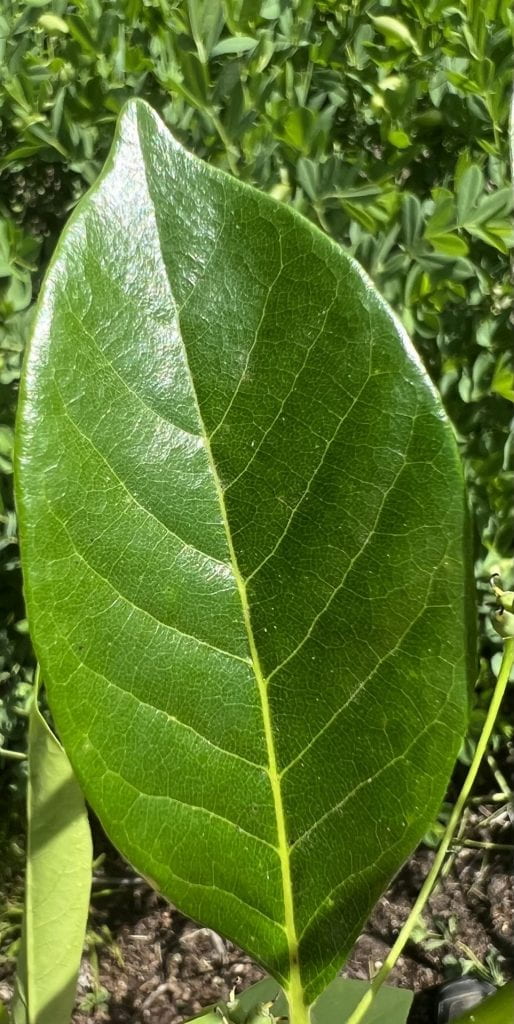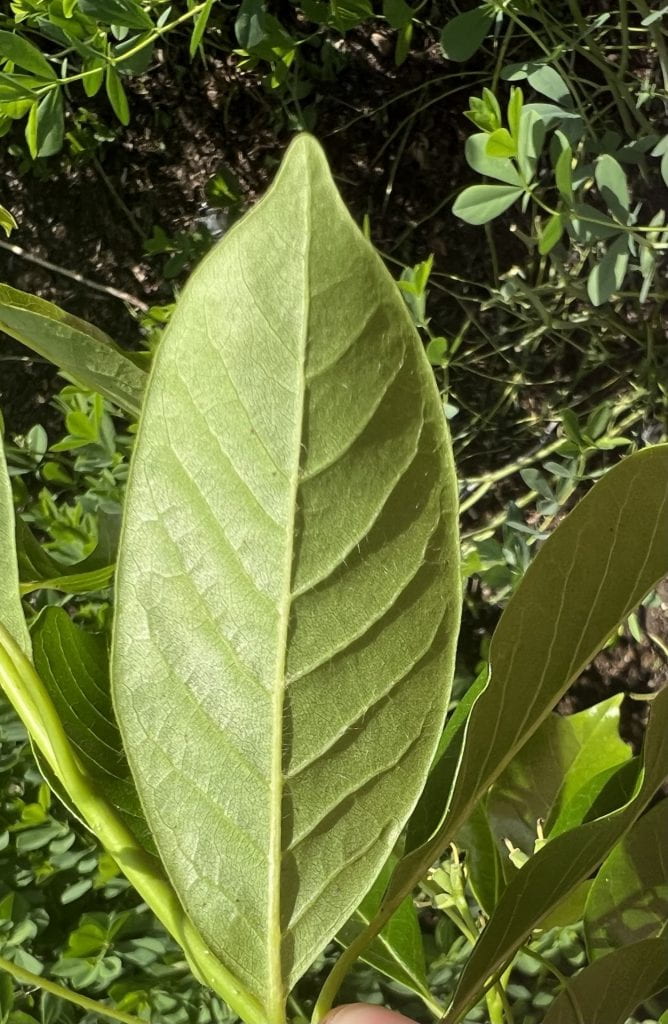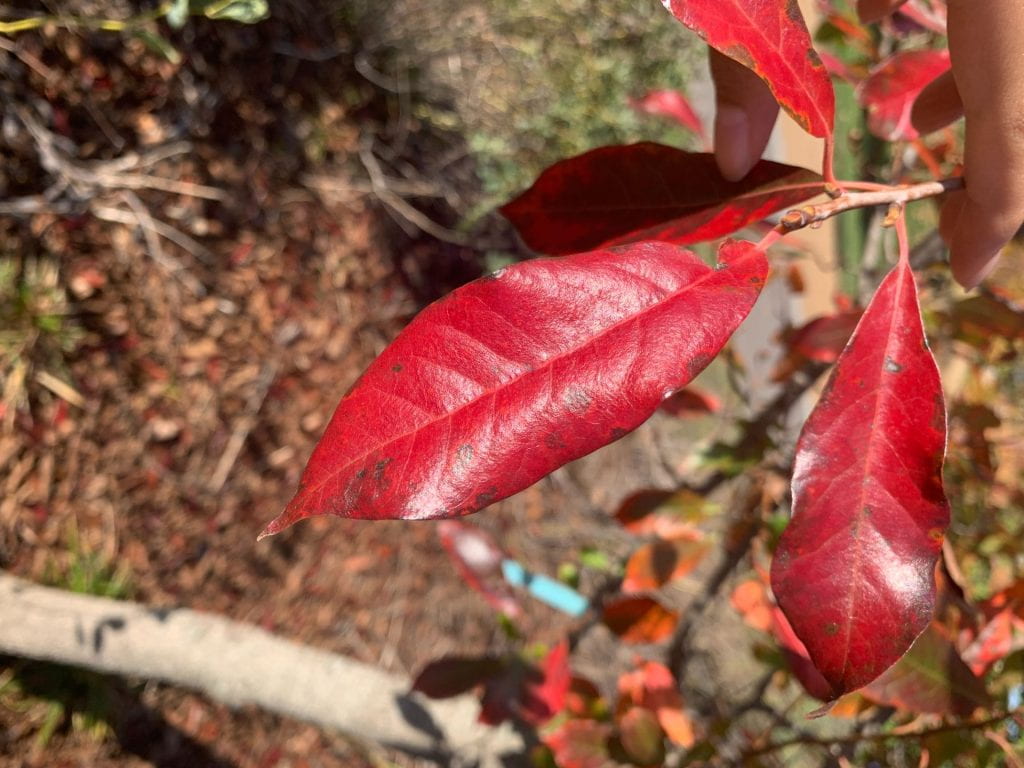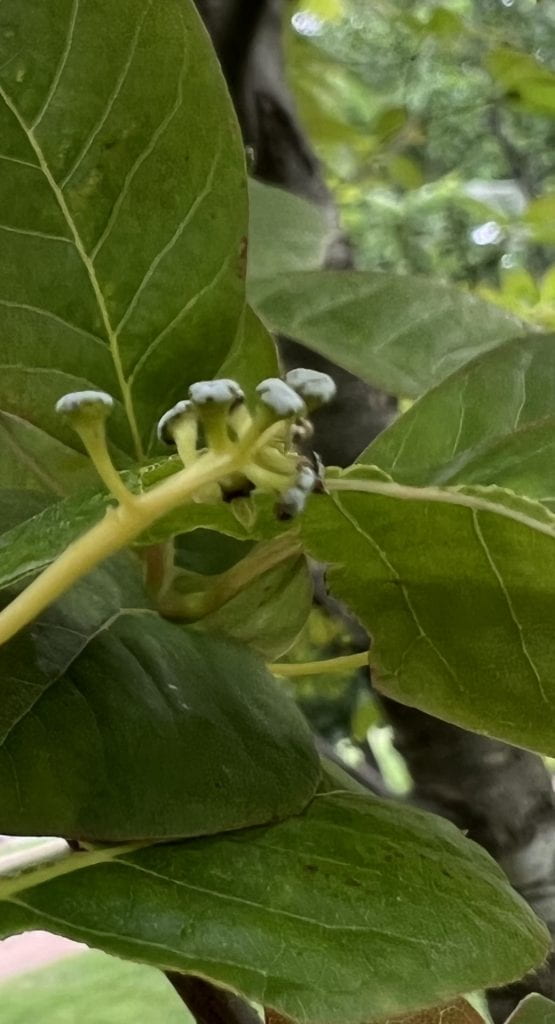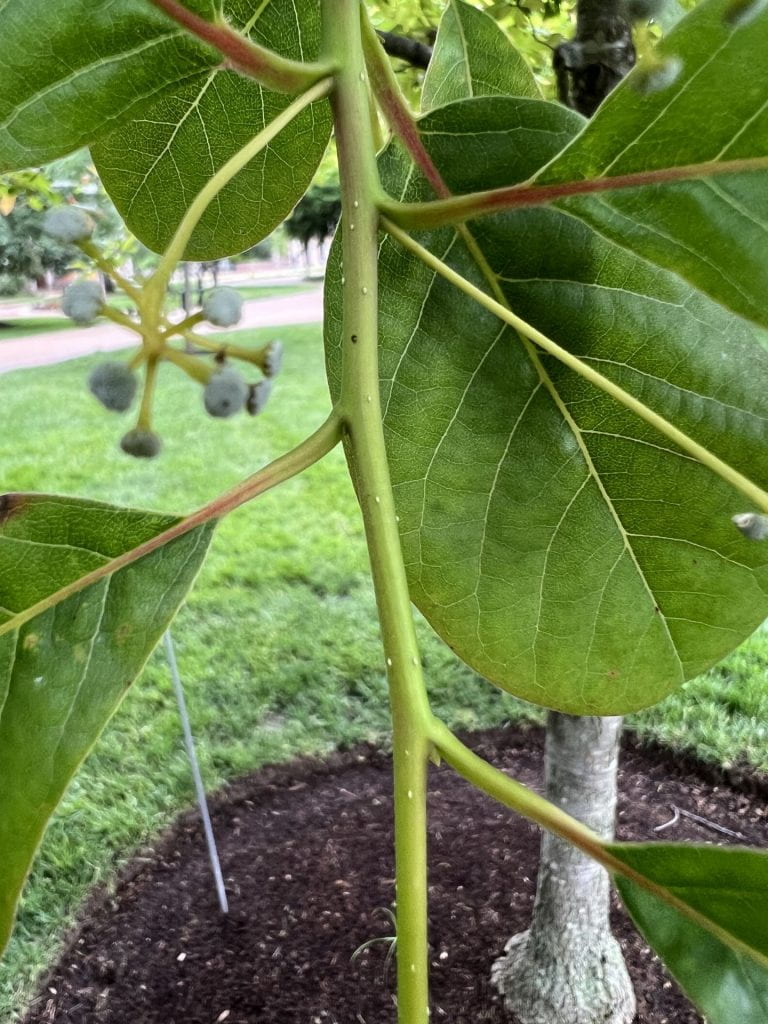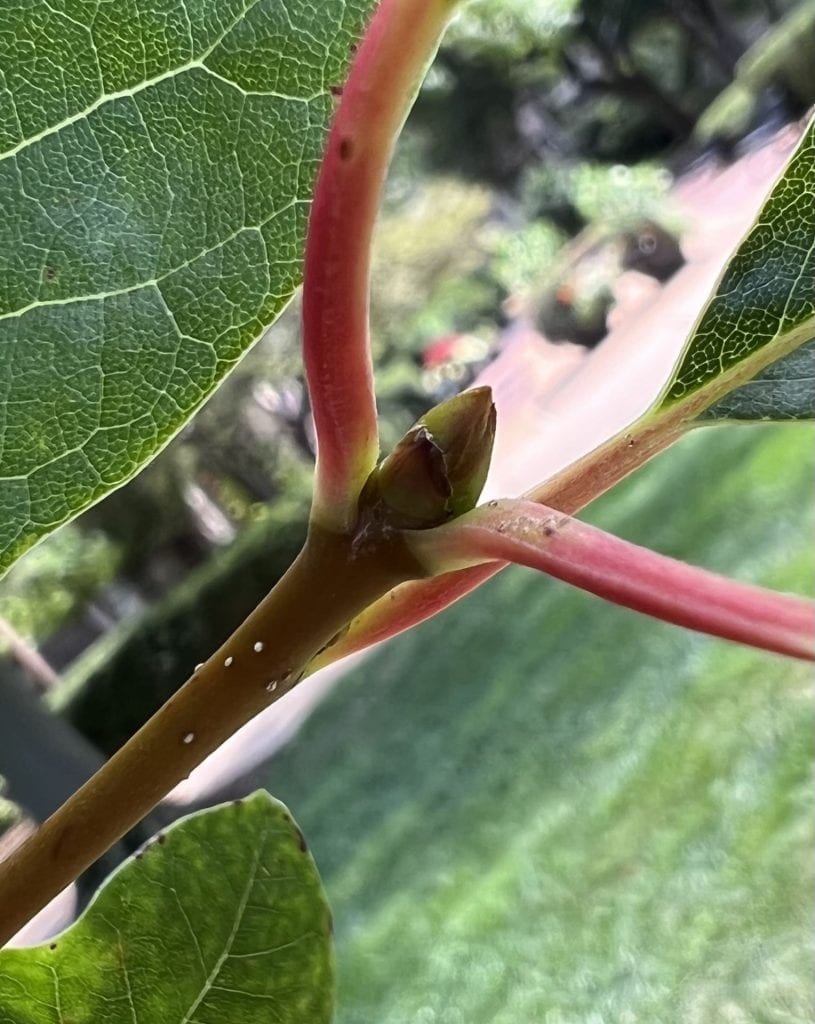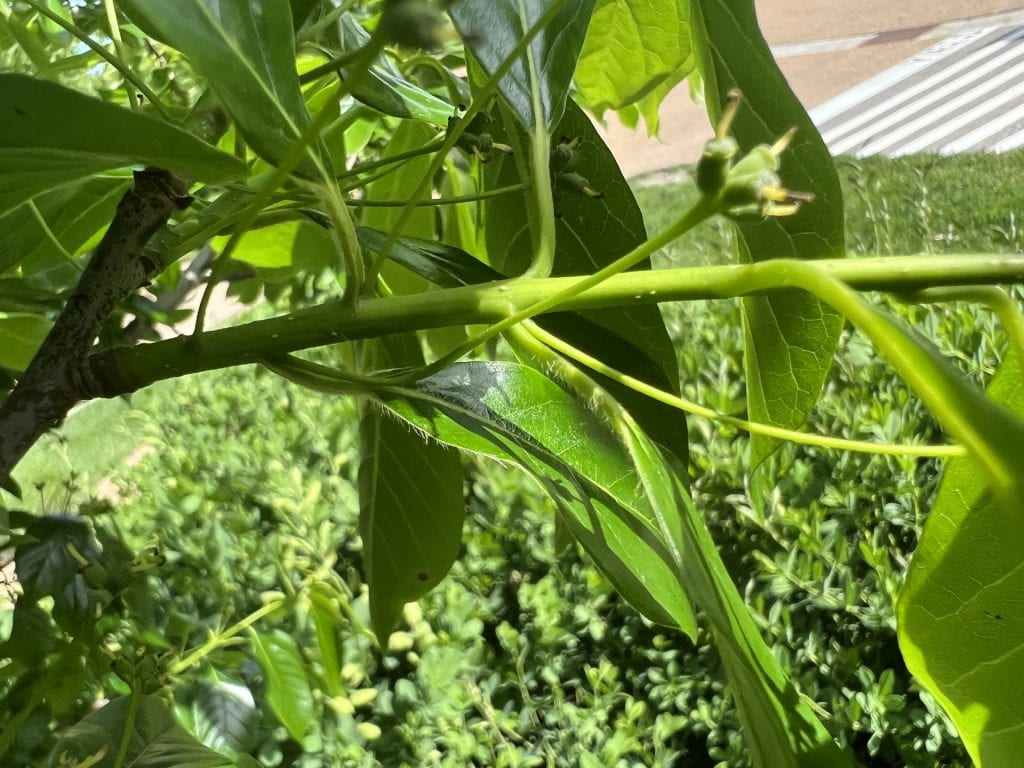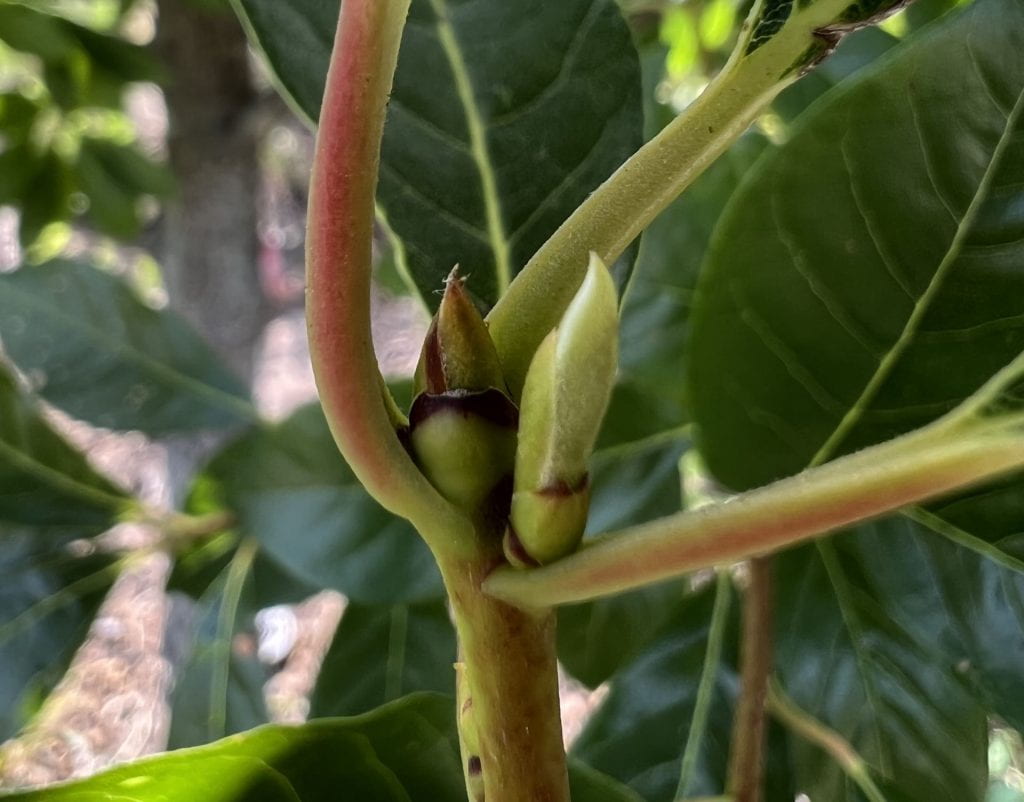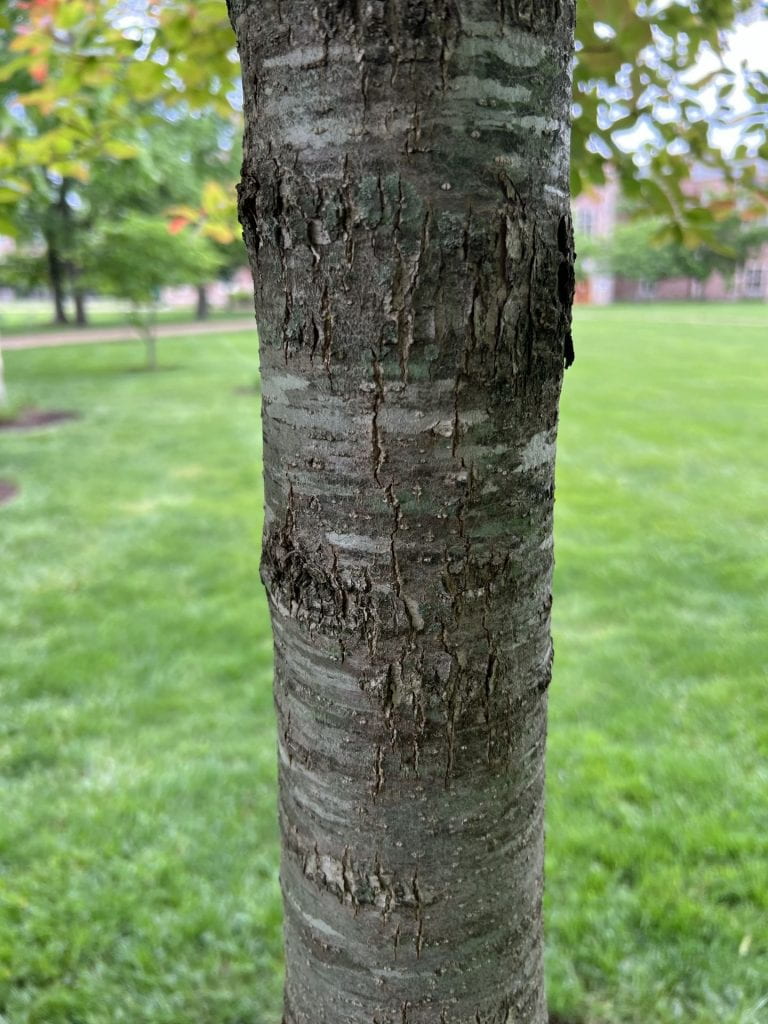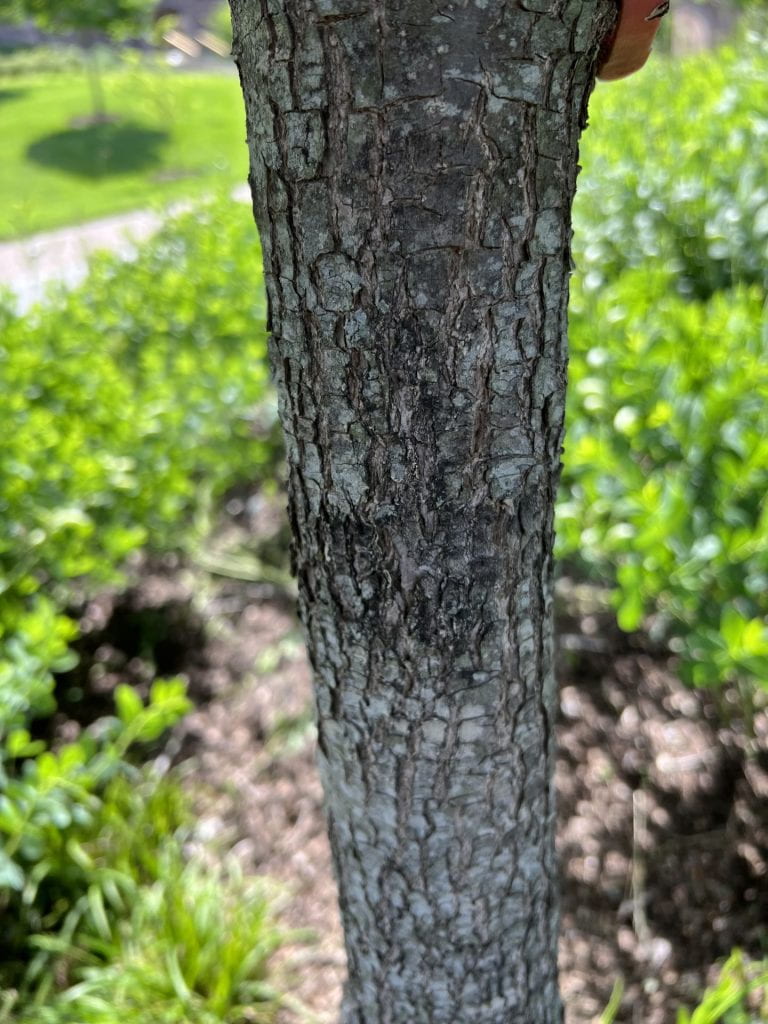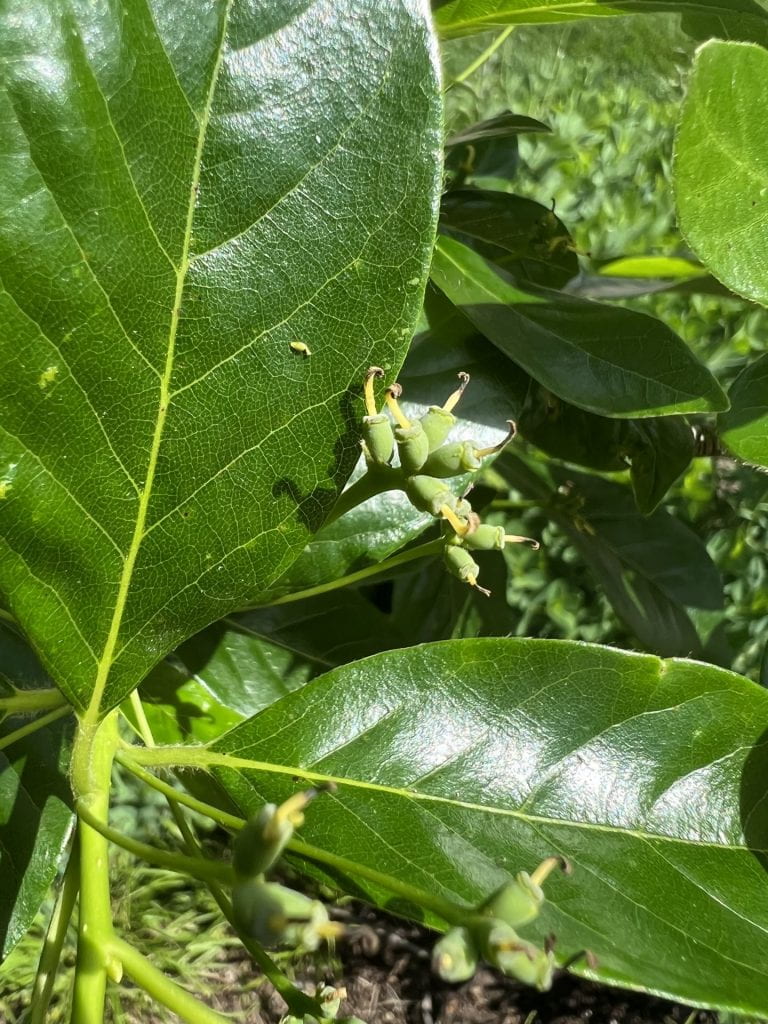Black Gum
Arbor Walk #32, Treekeeper ID #2247

The Black Gum, also called Tupelo, is a Missouri native and flexible mid-western species capable of growing in both standing water and rocky slopes. The Black Gum can grow as high as 90ft, although it generally only grows to a height of about 40ft. Its brilliant fall colors make up for its less showy flowers that bloom in May and June. The Black Gum flowers yield edible, sour fruit which is long and dark blue in color and gives the tree its name.
In addition to sharing its vivid fall coloration with the wild-type species, the leaves of ‘Wildfire’ cultivar emerge as a dramatic red color in the spring before fading to green throughout the summer.
More information on the Black Gums in our Arboretum here!
| Common Name | Black Gum, Black Tupelo |
|---|---|
| Latin Name | Nyssa sylvativa |
| Indigenous Name(s) | |
| Cultivar/Variety | ‘Wildfire’ |
| Commercial Name |

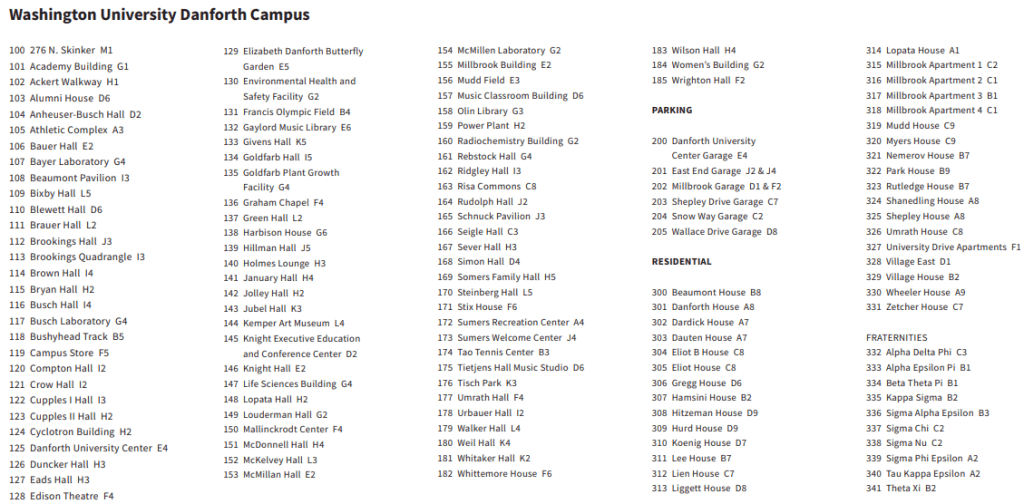
GPS Coordinates
N/A
Percent Concrete
N/A
Distance to Buildings
| Year | Close Building #1 | Close Building #2 | Close Building #3 |
|---|---|---|---|
| 2020 | Graham Chapel, 26.76 m | Umrath Hall, 27.26 m | Olin Library, 88.15 m |
Distance to Other Species
| Year | Close Species #1 | Close Species # 2 | Close Species # 3 |
|---|---|---|---|
| 2020 | Hybrid Elm, 10.18 m | Pin Oak, 12.20 m | Pin Oak, 13.74 m |
Standard Measurements
| Year | Height (m) | DBH (cm) | Crown Diameter N-S (m) | Crown Diameter E-W (m) | Average Crown Diameter (m) |
|---|---|---|---|---|---|
| 2020 | 5.2386 | 7.5 | 4.47 | 5.39 | 4.93 |
| 2023 | 7.6 | 10 | 6.6 | 6.1 | 6.35 |
Nests and Pests
| Year | Description |
|---|---|
| 2020 | 1 fall webworm nest on terminal branch 1 eggsac/coccoon on underside of dead leaf |
Leaf Identification
The leaves of the Black Gum are dark green and elliptical with entire margins and a slightly acuminate (tapered) tip. The veins are pinnate, and the leaves sometimes develop purple spots. The leaves can reach 5-6″ in length, and they turn a scarlet color and drop in the fall.
Twig and Bud Identification
The Black Gum’s twig turns a reddish-brown color in fall and winter. They often have curved spur shoots as well. The leaf buds are ovate and turn dark brown in the winter. They have also have many scales.
Bark Identification
The Black Gum has a grayish-brown bark with shallow furrows, and very old bark can develop thick blocky ridges.
Fruit Identification
The Black Gum has dark purple, oval drupes. Usually they have about a 1/2″ diameter, and the seed itself is ribbed. They ripen in late September and only appear on females.
[photo forthcoming]
Flower Identification
The flowers of the Black Gum are greenish-white. The males flower in dense heads, and the females flower in sparse clusters.
‘Wildfire’ Identification
Its leaves emerge as a dramatic red in the spring and fades to a green color throughout the summer. The wild type only has red coloration in the fall.
‘David Odom’ Identification
It has exceptional fall colors and has a more pyramidal shape compared to the wild type.
Tupelo ID Tips
- The genus Nyssa (tupelo) was formerly ordered within the Dogwood family; however, Nyssa trees do not share the arcuate veins of dogwoods (curling towards the tip, instead of straight to the sides). Tupelos have pinnate venation on their leaves.
- The Black Gum is one of five Nyssa species, two of which are limited to a very small range along the Florida Panhandle and nearby areas. The other two species besides Black Gum with extensive ranges are Swamp Tupelo and Water Tupelo.
- The Black Gum is distinguished from the Water Tupelo primarily by noticeable leaf differences. Black Gum leaves are half the length of Water Tupelo leaves, and have smooth margins, whereas the Water Tupelo leaves reach 10-12″ at longest and have sparse, irregularly arranged teeth.
- The Black Gum is distinguished from the Swamp Tupelo by its trunk and habitat preferences. The Swamp Tupelo primarily lives in submerged conditions, and develops a pyramidal trunk at its base. The Black Gum does prefer moisture-rich habitat, but does not primarily grow in submerged soils. As such, it maintains a more typical trunk base.



